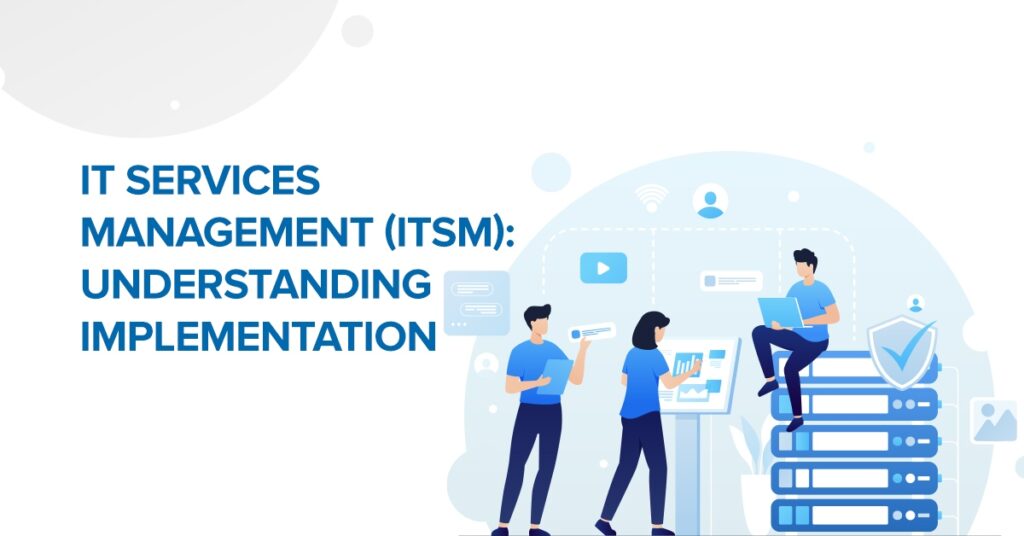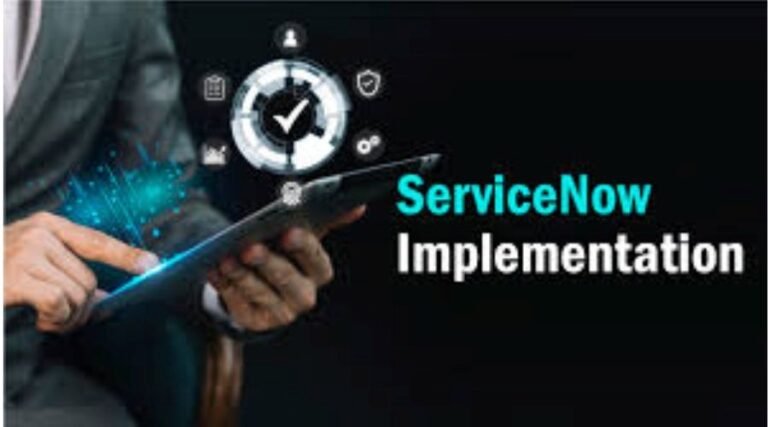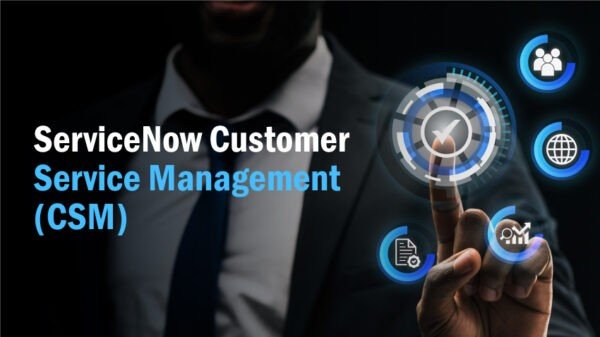IT Service Management (ITSM): Understanding Implementation
Transform your IT performance with DevTools ITSM Services. Empower your team to resolve issues faster and enhance productivity. Schedule a quick consultation now!
14 +
Years of Experience
550 +
Happy Customers
250 +
Years of Tech Leadership Exp.

"License Reseller" and "Consulting & Implementation" Partner

TL;DR
- IT Service Management (ITSM) provides a structured framework that aligns IT services with business goals, enhancing performance, reliability, and user satisfaction.
- ITSM tools like ServiceNow integrate incident, change, and problem management through automated workflows and a centralized Service Desk.
- Effective ITSM delivers measurable benefits—agility, compliance, faster resolution, and stronger alignment—while facing challenges in skills, communication, and service quality.
- Successful implementation requires automation, continuous improvement, and integration with DevOps and ITIL practices to ensure long-term business value.
I still remember one of our early IT projects where incidents kept piling up, service requests stayed open far too long, and change approvals dragged endlessly. That was when we realized that managing IT services is not just about fixing issues. It is about building a framework that anticipates problems, aligns with business objectives, and ensures consistent service delivery. That is exactly what IT Service Management (ITSM) brings to the table.
In this blog, we will explore what ITSM is, how it works, the benefits it offers, the challenges it faces, and the best practices we have found effective in implementation.
What is IT Service Management (ITSM)?
IT service management (ITSM) is a strategic approach that organizations use to maximize the effective utilization of IT resources. It involves defined activities and processes that support services throughout their lifecycle, including service and change management, incident resolution, and knowledge management.
Modern enterprises often use advanced ITSM platforms such as ServiceNow ITSM to streamline incident, change, and problem management while aligning IT services with business objectives.
This approach enables businesses to achieve their objectives and deliver measurable value by deploying applications, optimizing infrastructure, and managing processes in a structured way. IT teams work in close collaboration with the business to create, manage, and enhance services, often operating under clearly defined service-level agreements. ITSM delivers tangible benefits, such as aligning IT with business priorities, ensuring consistent performance, and fostering continuous improvement, allowing organizations to concentrate on strategic initiatives rather than reacting to problems.
How Does IT Service Management Work?
ITSM processes are delivered efficiently through specialized software tools known as ITSM suites. These suites support a range of workflow-driven processes within organizations, including:
- Incident management – Logging, tracking, and resolving issues quickly.
- Service requests – Handling user requests for access, information, or resources.
- Problem resolution – Identifying root causes and preventing recurrence.
- Change management – Managing changes in a controlled, low-risk manner.
At their core, ITSM suites combine a workflow management system with a configuration management database (CMDB) to ensure seamless connectivity between all ITSM processes. Some of these tools also earn official recognition under the Axelos ITIL Software Endorsement Scheme, confirming that they meet strict functional requirements for supporting ITIL processes. This endorsement allows organizations to display related trademarks and logos, adding credibility.
A central component of ITSM is the Service Desk, which functions as the Single Point of Contact (SPOC) between users and IT staff. This structure ensures clear communication and alignment with both user and IT provider objectives.
The role of the Service Desk has evolved beyond IT, extending into Enterprise Service Management (ESM), where ITSM tools are adapted for departments like HR, finance, and facilities. A key driver in this evolution is IT process automation, which reduces the burden of repetitive tasks and allows teams to focus on strategic, high-impact work.
Within the ITIL framework, the Service Desk serves as the central hub for interactions between service providers and users. It manages incidents and service requests, integrates business processes, and facilitates collaboration with customers, third parties, and vendors. It also oversees change requests, maintenance contracts, and software licensing. Unlike a traditional call centre or help desk, the Service Desk is designed to be user-centric, providing a comprehensive and integrated service management experience.
Pro Tip: Choose an ITSM suite that supports automation, integrates with your existing systems, and aligns with recognized frameworks like ITIL. This not only boosts efficiency but also strengthens compliance, audit readiness, and overall service credibility.
Benefits Of IT Service Management (ITSM)
The primary goal of ITSM is to ensure that IT services effectively meet both user and business requirements. When implemented well, it delivers several measurable business advantages:
- Agility in IT response – ITSM enables IT teams to respond swiftly and flexibly to unexpected events, seize new opportunities, and adapt to competitive challenges.
- Improved system performance and uptime – Enhanced availability and fewer disruptions lead to stronger user productivity and smoother business operations.
- Faster incident resolution – ITSM streamlines processes to accelerate issue resolution, reduce recurring problems, and automate prevention strategies, improving infrastructure efficiency while lowering costs.
- Clear service expectations – Well-defined service levels foster transparency, increase trust, and improve user satisfaction.
- Built-in compliance – Embedding compliance requirements directly into IT processes strengthens adherence to regulations and minimizes risk.
- Strategic transformation of IT departments – ITSM shifts IT from a reactive cost centre into a continually more efficient, productive, and budget-conscious business unit aligned with overall strategy.
Pro Tip: Track the success of ITSM using KPIs such as mean time to resolution (MTTR), first contact resolution rate, and service availability. Demonstrating quantifiable improvements helps justify ongoing investment and reinforces IT’s strategic value.
Benefits of ITSM For Employees
ITSM is not only valuable for business outcomes — it also delivers tangible improvements in the everyday work experience for employees:
- Improved IT support
Employees benefit from enhanced performance and productivity with 24/7 IT support. They also gain better visibility into available IT services and how to use them effectively. - Seamless omnichannel experience
Staff can access relevant information and submit support requests from any device, anywhere in the world, at any time, ensuring consistent service regardless of location. - Transparent roles and responsibilities
Clear definitions of task ownership help teams understand their responsibilities, fostering accountability and knowledge sharing. - Improved business alignment
ITSM provides better visibility into the needs and priorities of both the business and end users, enabling IT teams to deliver solutions that match real-world requirements.
Pro Tip: When rolling out ITSM to employees, focus on communicating how it will make their workday easier and more productive. Adoption increases significantly when staff understand the personal benefits.
What Are The Challenges In ITSM?
Even with a well-structured framework, ITSM can face operational challenges, especially when there is limited experience or a shortage of skilled resources. These issues are particularly common among individuals with less than five years of hands-on ITSM experience, as well as service providers dealing with high demand for critical roles such as incident management (IM), major incident management (MIM), problem management (PM), change management (CM), and service asset and configuration management (SACM).
Challenges Related to ITSM Process Roles
- Inadequate communication – Poor communication can slow down MIM call resolution and lead to delays in critical actions.
- Limited technical understanding – Some process managers lack in-depth knowledge of infrastructure technology, affecting performance during critical incidents, change reviews, and root cause analysis (RCA).
- Unmet client service expectations – Service quality and value may not consistently meet client needs, leading to dissatisfaction.
- Leadership gaps – Process managers may struggle to display strong leadership during high-pressure incidents or board-level discussions.
- Insufficient process knowledge – Limited understanding of ITSM frameworks can result in inefficient workflows.
- Task-focused mindset – Prioritizing completion of tasks over achieving meaningful outcomes reduces service value.
- Lack of infrastructure awareness – Without a clear grasp of the infrastructure landscape and its structure, managers may make uninformed decisions.
Challenges Related to Service Quality and Value Delivery
In our experience, many service providers face significant obstacles in meeting customer expectations and delivering the intended value. Common challenges include:
- Service quality deterioration – A lack of sufficient ITSM process skills and competencies can reduce the overall quality of service delivery.
- Perception gap despite SLA compliance – Even when ITSM service levels are met, customers may still feel the value provided is lacking.
- Activity without impact – Tasks and activities may be completed on time, yet the expected business outcomes remain unmet.
- Frequent customer escalations – Repeated issues can erode trust and strain client relationships.
- Misaligned improvements – Process or service enhancements may be implemented without directly addressing customer pain points, resulting in limited or no perceived value.
How To Implement IT Service Management?
Pre-Implementation Strategy
Prior to purchasing an ITSM platform, develop a strategic plan. Not all ITSM tools are identical, necessitating thoughtful consideration. Ensure compatibility with DevOps and agile frameworks, including legacy systems. Steps during this phase include:
- Set baseline expectations for new ITSM technology requirements.
- Analyse integration with other technologies and dependencies.
- Assess financial investments’ impact on company and user experiences.
- Calculate deployment and operational costs for new technologies.
Enhance Service Desk Training and Knowledge Sharing
Equip service desk analysts with comprehensive service and tool insights. This encompasses fundamental tool understanding and efficient job techniques. Strategies for achieving this include:
- Implementing a knowledge management platform for analysts to access solutions from a database, reducing the remaining workload.
- Offering and maintaining in-house training programs accurately.
- Investing in customer self-service solutions that auto-generate tickets, curtailing contact influx.
Automate to Handle Future Occurrences
ITSM management is an ongoing evolution where emerging technologies can influence existing strategies. With human resources and business processes not always pre-established, tackling issues related to these new technologies can prove challenging. Creating an automated solution to handle diverse future scenarios could reduce the reliance on manual problem-management interventions.
Monitor for Continuous Improvements
Effective ITSM implementation involves ongoing assessment of vital success indicators like KPIs. Since ITSM triggers process evolution, adaptable strategies are crucial. To facilitate this, consider these actions:
- Consistently document feedback to drive continual improvements across the ITSM journey. Quantitative input reflecting costs, business impact, and user experience is valuable.
- Prioritize KPIs tied to user experience for informed decision-making, capturing the effects of even minor ITSM adjustments.
- Appoint dedicated staff or “service improvement managers” to ensure quality enhancements, fostering a collaborative approach across departments.
Incorporate DevOps as an ITSM Best Practice
Adopting DevOps mirrors a continuous improvement approach, involving progressive shifts across development phases. Similarly, ITSM implementation can follow suit by:
- Defining the project’s ultimate ITSM goals.
- Regularly pinpointing and evaluating crucial success factors.
- Establishing a feedback loop to refine implementation based on user input.
- Leveraging continuous integration, delivery, and deployment methods to enhance service quality and minimize inefficiencies.
Pro Tip: Treat ITSM as a living, evolving capability rather than a one-time implementation. Success comes from combining the right tools, skilled people, and continuous process refinement. Keep leadership engaged with measurable results, listen to end-user feedback, and adapt quickly to changes in technology and business priorities. This approach not only ensures service excellence but also positions IT as a strategic partner in driving organizational growth.
Importance Of IT Service Management (ITSM)
Today, information technologies cover a wide range of tasks and responsibilities across the entire organization. Managing these services effectively is a constant challenge, and businesses are expected to meet that challenge without compromising quality or speed. IT Service Management (ITSM) plays a crucial role in orchestrating these diverse tasks and processes, ensuring they deliver measurable value to customers.
As a comprehensive framework of policies and processes, ITSM governs the management and support of IT services throughout their entire lifecycle. This structured approach not only enhances operational efficiency but also improves service quality, strengthens business alignment, and boosts employee productivity across the enterprise.
ITSM vs ITIL vs DevOps
Choosing the appropriate IT framework is crucial for seamless collaboration and management. Often, organizations lean towards ITSM/ITIL or DevOps. However, fully embracing just one can pose challenges.
ITSM/ITIL and DevOps are distinct in purpose and function, yet not incompatible. Here, we offer concise definitions for each and explore their interrelationships:
ITSM
ITSM is a strategic IT management approach, emphasizing value delivery to customers. It clearly defines roles and responsibilities across departments for IT services, leading to improved productivity, cost-efficiency, and user satisfaction.
ITIL
ITIL, or IT service, offers a comprehensive framework for IT service management. It furnishes optimal practices for aligning IT functions with business objectives and enhancing service delivery. With multiple iterations, the latest version is ITIL4.
DevOps
Similar to ITIL, DevOps is an IT framework, but whereas ITIL focuses on streamlining service management and prioritizing customer satisfaction, DevOps functions as a philosophy for IT development and delivery. It harmonizes development and operations teams, aiming to enhance communication and collaboration within organizations. DevOps facilitates continuous application delivery, cost reduction, shorter development cycles, and improved interdepartmental cooperation. Moreover, DevOps often integrates SRE (site reliability engineering) to reinforce its objectives through task automation and incident management resolution.
How Can DevTools Help Your Company With ITSM?
DevTools play a pivotal role in elevating your company’s IT Service Management (ITSM) efforts. Here’s how they can contribute:
- Enhanced Efficiency: DevTools streamline ITSM processes, expediting incident resolution, change management, and overall service delivery.
- Improved Collaboration: By facilitating communication between development and operations teams, DevTools foster better alignment with the ITSM framework.
- Faster Problem-Solving: These tools enable quicker identification and resolution of IT issues, minimizing downtime and enhancing user satisfaction.
- Efficient Change Implementation: DevTools assist in a seamless integration of changes, ensuring minimal disruptions and effective adaptation.
- Increased Productivity: The automation and streamlined workflows offered by DevTools lead to higher efficiency in ITSM operations.
- Enhanced User Experience: Through faster issue resolution and smoother service delivery, DevTools contributes to a better overall experience for users.
Conclusion
IT Service Management (ITSM) goes beyond handling day-to-day IT operations — it is a strategic framework that ensures technology consistently delivers measurable value to the business. By aligning IT services with organizational goals, improving efficiency, and fostering continuous improvement, ITSM strengthens productivity, enhances user satisfaction, and supports long-term business growth.
At DevTools, we help organizations unlock the full potential of ITSM with the right tools, frameworks, and automation strategies. From streamlining service desk operations to integrating ITIL best practices, our expertise ensures your ITSM implementation delivers maximum efficiency and measurable results. Get in touch with our team today and discover how we can transform your IT services into a true business advantage.
FAQs
Organizations can implement ITSM by defining clear processes, selecting suitable tools, training staff, establishing metrics, and continuously improving workflows.
ITSM is the broader practice of managing IT services, while ITIL is a specific framework within ITSM that provides guidelines for service lifecycle stages and processes.
ITSM focuses on structured IT service delivery, while DevOps emphasizes rapid software development and deployment. Integrating both promotes efficient, collaborative, and customer-centric IT operations.
Common ITSM tools include incident management, change management, asset management, and service desk software, facilitating processes like ticket tracking, configuration management, and more.
The five stages of ITSM are Service Strategy, Service Design, Service Transition, Service Operation, and Continual Service Improvement. These stages guide the service lifecycle.
Yes, Jira can be configured to function as an ITSM tool, facilitating incident management, problem management, change management, and other IT service management processes.
ITSM tools automate and streamline IT service management processes. They manage incidents, changes, problems, assets, and service requests, enhancing efficiency, collaboration, and service quality.
Yes, potential risks include overcomplication of processes, high implementation costs, resistance to change, and inadequate tool customization. Proper planning and management are essential to mitigate these risks.
Jira is not specifically an ITSM (IT Service Management) tool, but it can be used as an ITSM tool. Jira is primarily a project management and issue-tracking tool that can be customized to support ITSM processes such as incident management, change management, and problem management. It is often used in combination with other ITSM tools to provide a comprehensive ITSM solution.




